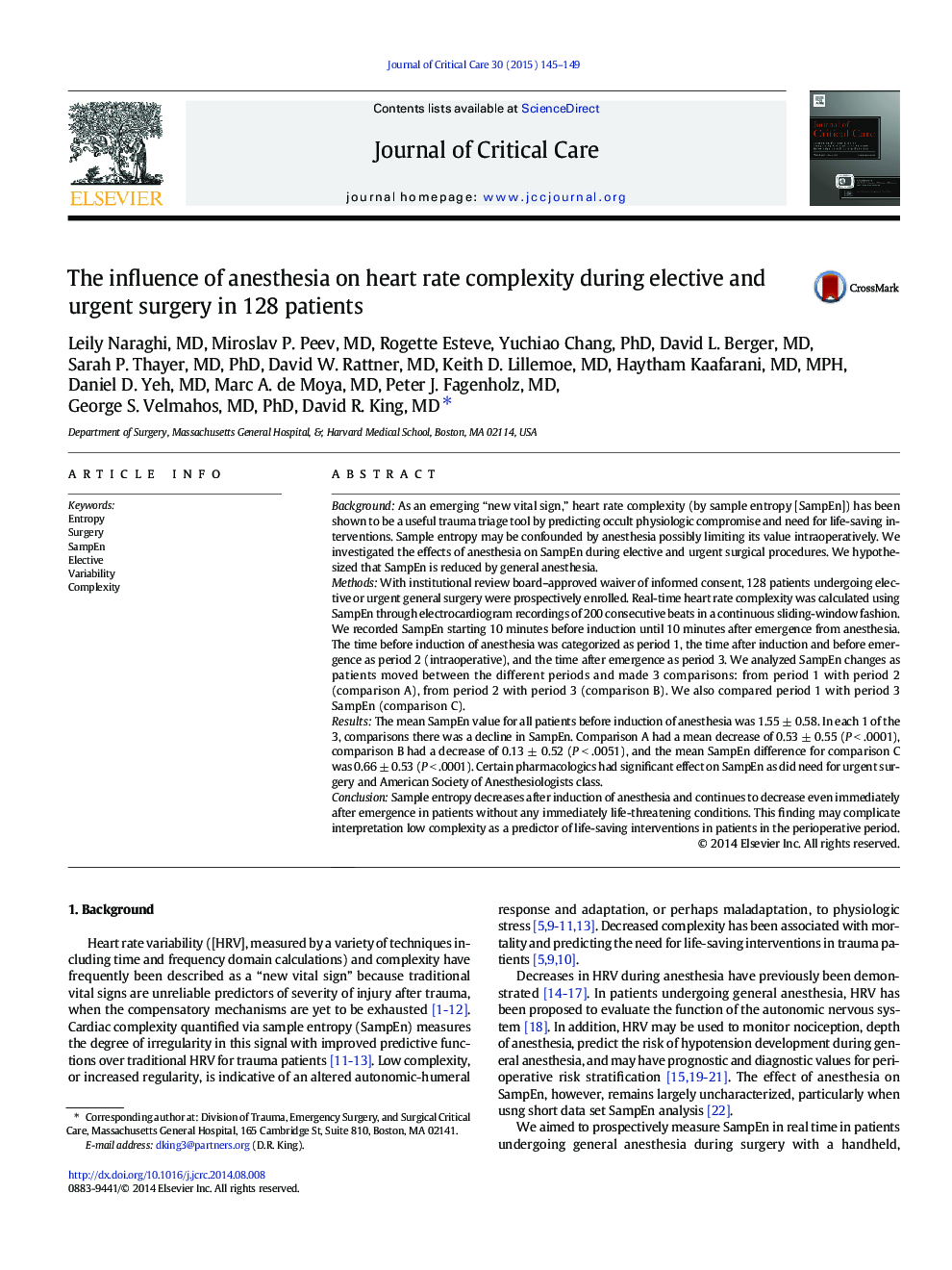| Article ID | Journal | Published Year | Pages | File Type |
|---|---|---|---|---|
| 5885669 | Journal of Critical Care | 2015 | 5 Pages |
BackgroundAs an emerging “new vital sign,” heart rate complexity (by sample entropy [SampEn]) has been shown to be a useful trauma triage tool by predicting occult physiologic compromise and need for life-saving interventions. Sample entropy may be confounded by anesthesia possibly limiting its value intraoperatively. We investigated the effects of anesthesia on SampEn during elective and urgent surgical procedures. We hypothesized that SampEn is reduced by general anesthesia.MethodsWith institutional review board-approved waiver of informed consent, 128 patients undergoing elective or urgent general surgery were prospectively enrolled. Real-time heart rate complexity was calculated using SampEn through electrocardiogram recordings of 200 consecutive beats in a continuous sliding-window fashion. We recorded SampEn starting 10 minutes before induction until 10 minutes after emergence from anesthesia. The time before induction of anesthesia was categorized as period 1, the time after induction and before emergence as period 2 (intraoperative), and the time after emergence as period 3. We analyzed SampEn changes as patients moved between the different periods and made 3 comparisons: from period 1 with period 2 (comparison A), from period 2 with period 3 (comparison B). We also compared period 1 with period 3 SampEn (comparison C).ResultsThe mean SampEn value for all patients before induction of anesthesia was 1.55 ± 0.58. In each 1 of the 3, comparisons there was a decline in SampEn. Comparison A had a mean decrease of 0.53 ± 0.55 (P < .0001), comparison B had a decrease of 0.13 ± 0.52 (P < .0051), and the mean SampEn difference for comparison C was 0.66 ± 0.53 (P < .0001). Certain pharmacologics had significant effect on SampEn as did need for urgent surgery and American Society of Anesthesiologists class.ConclusionSample entropy decreases after induction of anesthesia and continues to decrease even immediately after emergence in patients without any immediately life-threatening conditions. This finding may complicate interpretation low complexity as a predictor of life-saving interventions in patients in the perioperative period.
